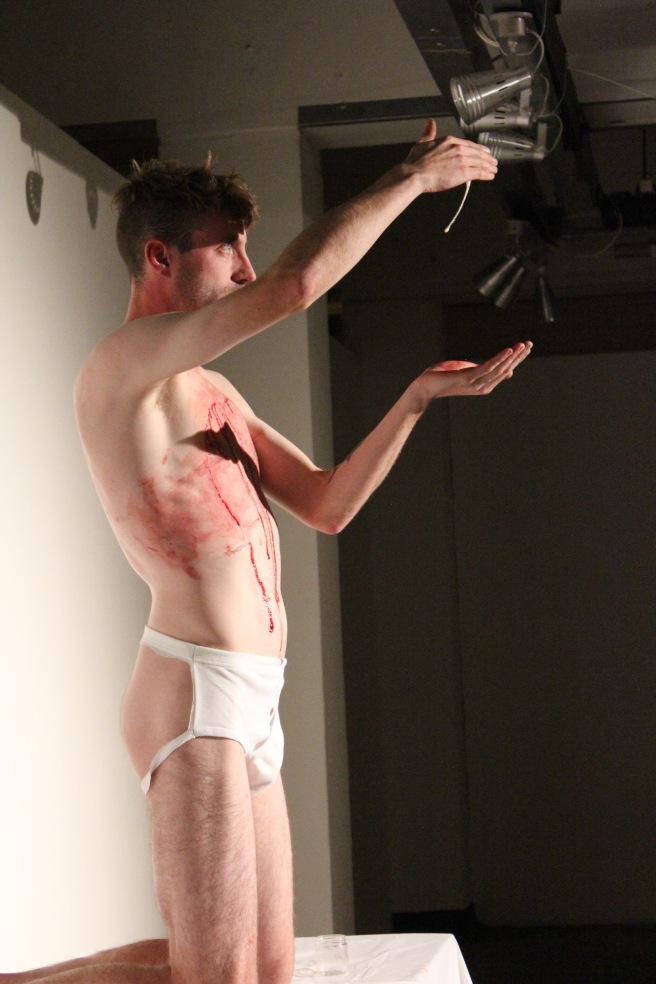by Léann Herlihy
P R E L U D E
Towering over the open mouth of sodden soil, a man frees his shovel from the Earth’s grasp with a single jerk. Sinking it back into the ground, the spade cleaves through the sepulcrum’s oesophagus: down goes the fine edge of steel; up comes a trowel full of fertile land. With each strike hit, the man pierces down deeper than the one struck before; penetrating through layers of soil; penetrating through layers of the past. Submerging downwards, retreating upwards and finally tossing backwards, a steady tempo is set: steel against soil, pause, soil against soil, pause. A closed circuit; a monotonous ritual, until finally a shrill clink.
A R I T U A L
What roles might the concept of ritual play in the study of contemporary society and culture? As one of the founding concepts of our discipline, ritual has long been a cornerstone of anthropological thought, arguably a universal feature of human social existence: just as one cannot envision a society without language or exchange, one would be equally hard-pressed to imagine a society without ritual. And while the word “ritual” commonly brings to mind exoticised images of primitive others diligently engaged in mystical activities, one can find rituals, both sacred and secular, throughout “modern” society: collective experiences, from the Olympics to the commemoration of national tragedies; cyclical gatherings, from weekly congregations at the local town hall to the annual turkey carving on Christmas Day to the intoxication of Mardi Gras; and personal life-patterns, from morning grooming routines to the ways in which we greet and interact with one another.
It was then neither pure coincidence nor primitivist exoticisation that placed ritual at the centre of the development of anthropological thought: it was instead ritual’s rich potential insights as an object of sociocultural analysis. So, what, in fact, is ritual? Where does ritual originate? What forms does ritual take, and how do these various forms constitute “ritual”? What are ritual’s effects, and how are they achieved? How does ritual frame our social experiences, and how does actors’ input in turn re-frame ritual? What are the relationships between ritual symbols across social fields (religious, political, sexual)? Who exercises control in rituals; or do rituals exercise control upon their actors? How does the study of ritual processes contribute to an understanding of contemporary sociocultural processes? And how, in the end, many times does this act need to be performed before it turns into a ritual?
T H E R I T U A L
A white washed steeple, housed on the grounds of a seven-hundred-year-old palace in Piotrowice Nyskie, Southern Poland, became a site of ritual overnight. An intimate awakening, designed for one individual at a time, this shamanistic pathway begins with the reassurance that it can be ended at any moment, followed by the recommendation to expose as much skin as one feels comfortable with. Thus, stripping down to just undergarments, a voice softly asks the permission of placing a cloth over both eyes; suddenly blinded, a vulnerability shrieks throughout the body.
Momentarily standing in solitude, a hand slips into each of your empty palms, a gentle touch is felt on the lower back, navigating you to move forward. Passing under draped fabrics, a sporadic movements of hands come to the touch of your bare skin; un-intrusively yet, unexpectedly. This gentle touch gains momentum – it becomes a force: pushing the upper torso backwards while pulling the lower torso forwards: you’re in the air — a resurrection. Being placed on a soft mat, your body is dragged up an aisle, an action reminiscent on the statement Pliny the Elder once wrote: “It is in the due order of nature that man should enter the world with the head first, and be carried to the tomb in a contrary fashion.”




Being brought to a halt, the participant is erected; their feet dangling. Slowly, water surrounds them, and the religious gesture begins: the washing of the feet. From here, a paraphernalia of objects are employed in a bid to revive any dormant senses. Feathers, fur, familiar smells; breath, barks, keening shrieks; gentle tongues lick and whisper languages of different origins.
Constant contact, both physically and mentally — the body is brought to its apex of sensitivity. It is at this peak, that all touch is ceased; all interaction is halted. The mind is vacant, the blindfold is removed, yet the eyes remain closed, involuntarily. Undoubtedly, it is achieved with great difficulty that the mind is brought to to such a vacancy, that it is at a loss to know its whereabouts. However, it is often in such states, that one recollects past events and localities, remembering the substances of former memories, and the fact that we have visualised a similar subject before.
Eyes slowly open, absorbing the image before them; a window with no pane framing a wild garden of overgrown flowers – a serenity towards the present moment.

T H A T R I T U A L
While admitting the sensory elements reflect each person’s own interpretations, this is not to undermine the solid concept of personal enlightenment, rather it allows us to get into a much more personal rendition of oneself.
The fact that a ritual can be materialised within a few days, shows that it is an inevitable component of culture, extending from the largest-scale social and political processes to the most intimate aspects of our self-experience. Yet within this universality, the inherent multiplicity of ritual practices, both between and within cultures, also reflects the full diversity of the human experience.
SENSORIUM was realised during the Palace Art’s Residency, by six international artists — Anne Cutter (GR), Moa Johansson (SW), Sophie Merrison (GR/GB), Eddie Sellers (GB), Joseph Summers (GB) and Joseph Vaughan (GB). Images by Billy Craigan.







